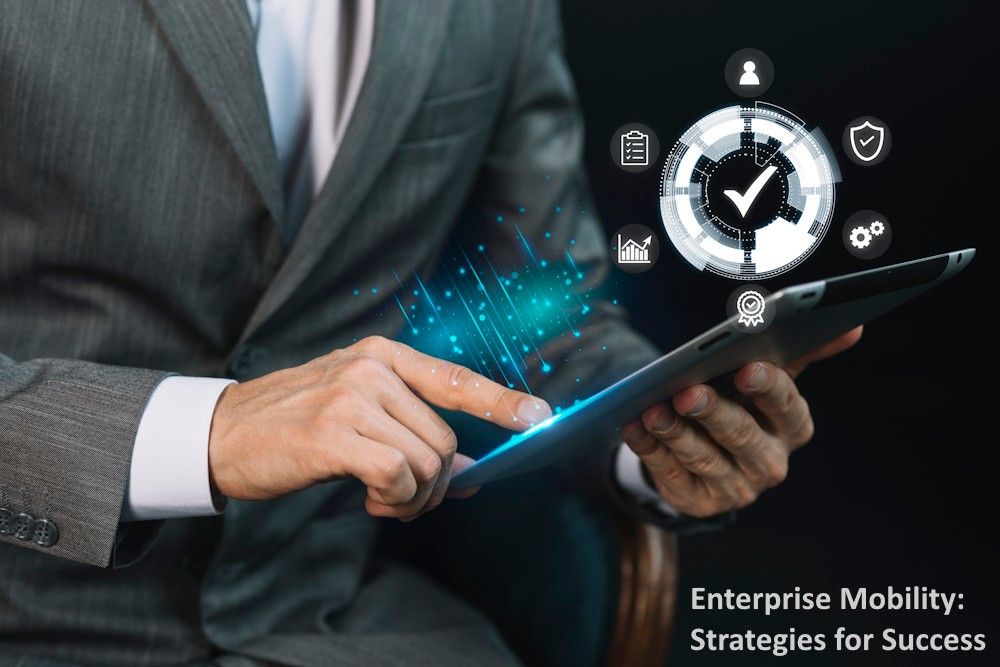
In today’s fast-paced, digitally-driven world, mastering enterprise mobility is no longer optional—it’s a necessity. As businesses strive to keep pace with the ever-evolving technological landscape, implementing an effective enterprise mobility strategy becomes critical. This guide aims to arm businesses with the knowledge, insights, and strategies needed to navigate the complex terrain of enterprise mobility successfully. No matter the size or sector of your business, this guide will provide you with practical, actionable strategies to leverage enterprise mobility to its fullest potential. So, let’s embark on this journey together, uncovering the secrets to mastering enterprise mobility and unlocking unprecedented levels of operational efficiency, productivity, and success for your business.
Understanding Enterprise Mobility
Enterprise mobility refers to an approach where employees can do their jobs from anywhere using a variety of devices and applications. This shift towards a more flexible work environment has numerous benefits. It enables employees to access critical data and applications on the go, leading to increased productivity, improved customer service, and streamlined business processes. However, with these benefits come unique challenges that businesses must be aware of to effectively leverage enterprise mobility.
Benefits of Enterprise Mobility
By embracing enterprise mobility, businesses can achieve improved operational efficiency, enhanced customer experience, and increased employee satisfaction. A mobile-first strategy allows for seamless communication and collaboration, enabling quicker decision making and increased productivity. It also reduces the constraints of a traditional office setting, promoting a better work-life balance for employees. Additionally, it allows for greater flexibility in responding to changing business needs and customer demands.
Strategies for Successful Enterprise Mobility
Implementing enterprise mobility is not without its challenges. However, with the right strategies, businesses can successfully navigate these difficulties. Here are some key strategies for a successful enterprise mobility implementation:
Comprehensive Planning
Before integrating mobility into business operations, thorough planning is required to identify the needs of the business, the best mobile technologies to invest in, and how to integrate them into existing processes.
Implementing Robust Security Measures
With the increasing use of mobile devices, ensuring data security is paramount. Implementing robust security measures such as two-factor authentication, secure mobile gateways, and regular security audits can help protect sensitive information.
Embracing a Mobile-First Business Strategy
To fully capitalize on enterprise mobility, businesses must adopt a mobile-first strategy. This means designing business processes with mobile usage in mind from the outset.
Navigating Challenges in Enterprise Mobility
While implementing enterprise mobility, businesses often encounter a set of common challenges. Here are a few strategies for getting past these barriers:
- Device Management: With a plethora of devices in operation, managing them can be daunting. Solutions like Mobile Device Management (MDM) systems can help simplify this task, by providing centralized control of all mobile devices.
- Data Privacy: With increased mobile usage, data privacy becomes a significant concern. Businesses need to implement strict privacy policies and ensure that they comply with regulations such as GDPR.
- Integration with Existing Systems: Integrating new mobile technologies with existing systems can pose a technical challenge. Using APIs and middleware solutions can help ease this integration process.
- User Acceptance: Employees may resist using new technology. To mitigate this, companies should provide comprehensive training and communicate the benefits of these new tools effectively.
- Keeping Up with Rapid Technology Changes: The pace of change in mobile technology can be overwhelming. Businesses should stay abreast of the latest developments, and be willing to adapt and evolve their mobile strategies as necessary.
Despite its many advantages, enterprise mobility does come with its share of challenges. However, with the right strategies and support, these can be effectively managed.
Future Trends in Enterprise Mobility
The future of enterprise mobility is set to be driven by several emerging trends that promise to further transform the way businesses operate. In our Enterprise Mobility Strategy guide, we’ve identified a few key trends that businesses should monitor closely:
- 5G and Enhanced Connectivity: The advent of 5G is poised to dramatically increase network speeds and reliability, enabling more robust mobile enterprise applications and real-time data access.
- Artificial Intelligence and Machine Learning: These technologies are being increasingly integrated into mobile apps, offering predictive analytics, automation, and enhanced user experiences.
- Internet of Things (IoT): IoT devices interconnected with mobile apps can provide valuable data and enable automation of various business processes.
- Augmented and Virtual Reality (AR/VR): These immersive technologies can enhance training programs and facilitate remote collaboration in ways previously unimaginable.
As outlined in our Enterprise Mobility guide, staying ahead in the enterprise mobility space requires not only understanding these trends but also effectively incorporating them into your business strategies. By embracing emerging technologies and staying agile, businesses can stay competitive in today’s fast-paced digital landscape.
Conclusion
The importance of continued learning and adaptation in the rapidly changing landscape of enterprise mobility cannot be overstated. By staying abreast of new technologies and trends, businesses can unlock the full potential of enterprise mobility and drive their success in the digital age. With the right strategies and tools in place, businesses can achieve enhanced connectivity, increased efficiency, improved decision-making, and ultimately, sustainable growth. As always, we at our company are committed to helping businesses navigate the ever-evolving landscape of enterprise mobility and achieve their goals. Thank you for reading our Enterprise Mobility Guide. We hope it has provided valuable insights and guidance for your journey towards mobility excellence. As the world continues to evolve and innovate, we look forward to being there every step of the way with you. Let’s embrace enterprise mobility together and drive our businesses towards a more connected, efficient, and successful future.